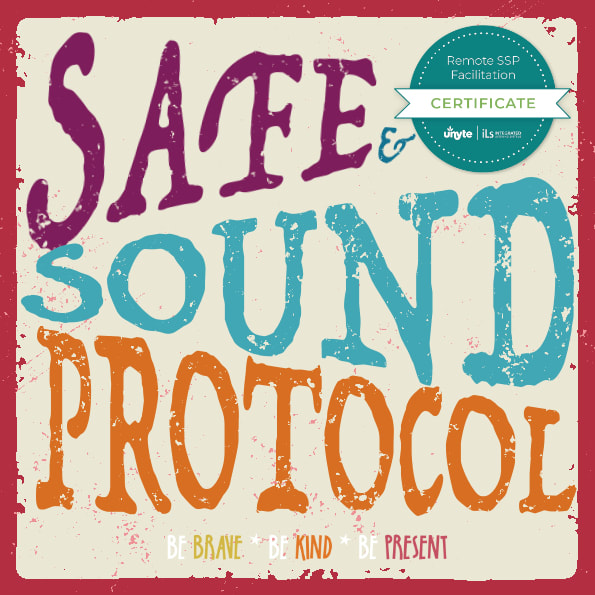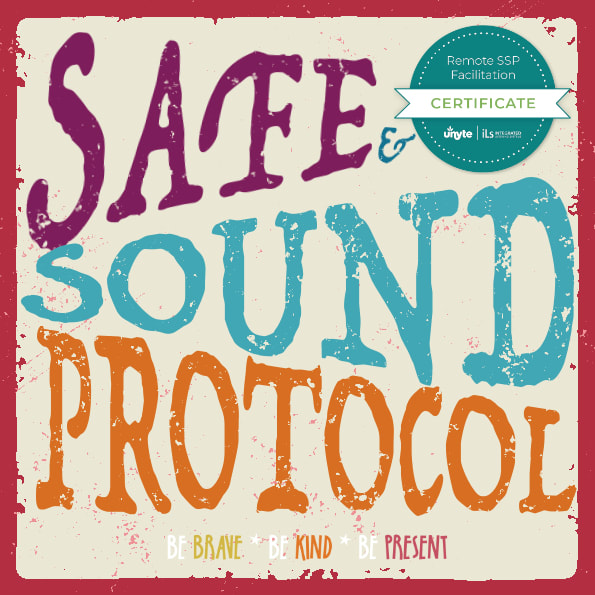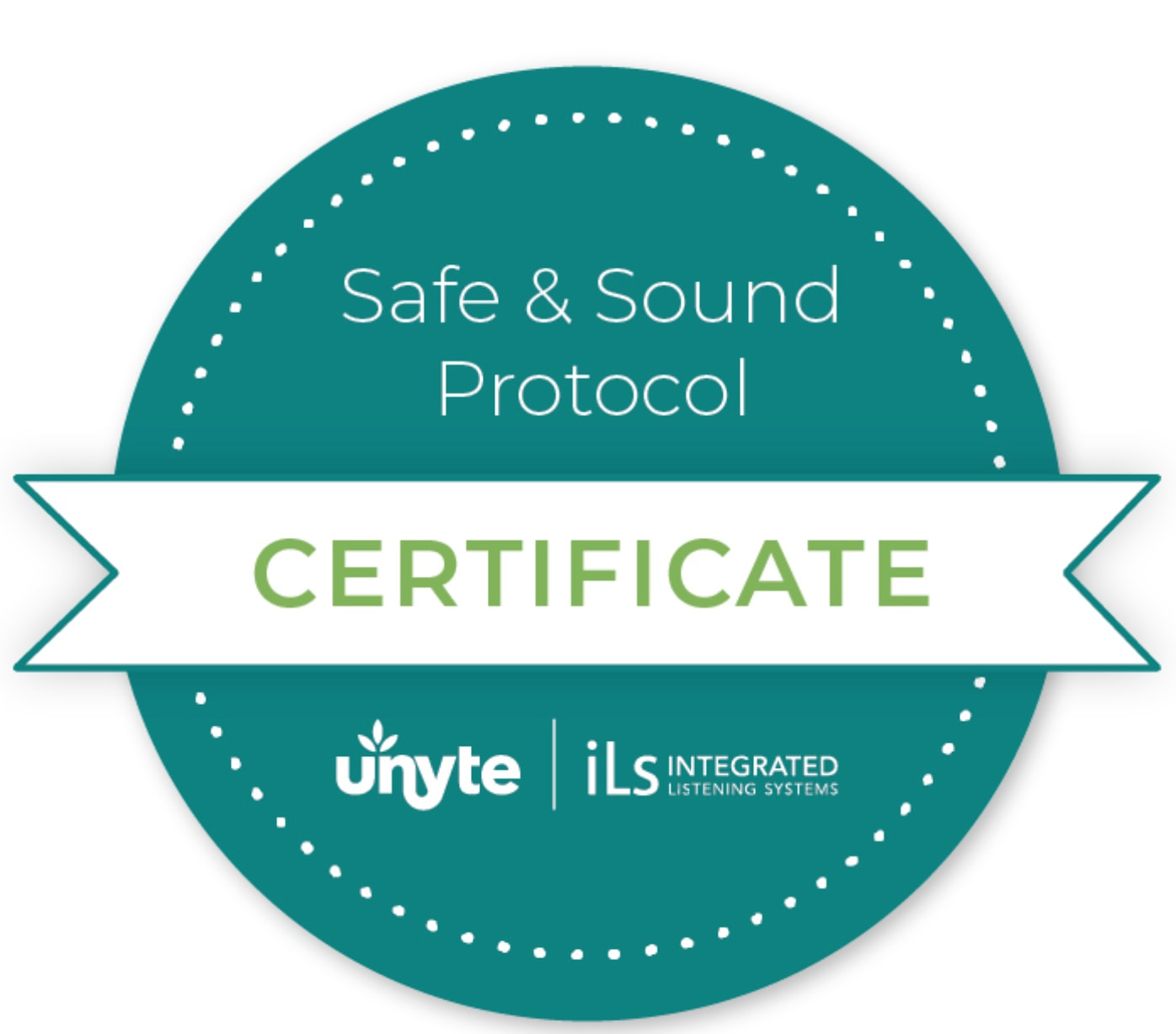- workshops
- >
- Safe & Sound Protocol
Safe & Sound Protocol
*** The fee for the SSP is $550. Please email Rebekka at [email protected] to see if we are a good fit and to see if the SSP is a good choice for you at this time. Please note that I am only registered to work with clients in Ontario at this time.***
Safe & Sound Protocol (SSP):
The SSP uses the auditory system (how we hear) and its connection to the nervous system (how we feel) to establish the brain and body’s ability to find states of calm, safety, and regulation. I use SSP as a complimentary resource for therapy. Please note that this is NOT a stand-alone therapy. It opens us up, stabilizes and prepares the nervous system to do the hard work of therapy and growth.
The Background Details
The SSP is a 5 hour, evidenced-based, non-invasive treatment to help one regulate their nervous system (and improve social engagement, as well as physical and emotional regulation). It was created to reduce stress and anxiety using filtered music that exercises and challenges middle ear muscles).
The music is composed of altered vocal music (i.e., filtered). It is specially adapted to use the auditory pathway to access the neural network that manages autonomic nervous system regulation. For more information on how this works, please see page one of this document or visit: “Nourish and awaken the nervous system. Feel better. Think better. Connect better.”
This therapy is most successful when accompanied by other therapies, such as psychotherapy, occupational therapy or somatic experience therapy.
How is it done?
Over ten or more days, you will listen to the filtered music offered via the Unyte-ILS app (provided to you by Rebekka). This is done in 5-10 minute increments (to a maximum of 30 minutes/day). The length of time depends on how your nervous system manages the music.
While listening to the music helps to engage in a relaxing activity, such as colouring, stretching, puzzles, crafting (knitting, etc.). It is essential that you use over-the-ear headphones (that are not soundproof) and that you can keep the volume as low as is comfortable (and do not change it while listening). Not to worry, you will test the volume before each session.
While it is suggested that we do this over ten consecutive days, we work from a “less is more” policy. That means that if you’re feeling dysregulated or overwhelmed while listening to the music, it’s time for us to take a break. This is a Safe before Sound protocol, and it’s essential that you feel grounded before and throughout much of your session for us to maximize success!
Given the small increments of time (5-30 minutes), working with Rebekka will not always be possible, and you will be listening to the music on your own at your convenience. However, to ensure that you’re feeling comfortable with the SSP at first, we will listen to the first hour together, as well as the third and possibly the fourth hour. However, if you feel like you’d be more comfortable working together throughout, we will develop a program that works for both of us.
The people behind it:
The Safe and Sound Protocol, or SSP, is an evidenced-based, non-invasive application of Polyvagal Theory. It’s based on years of research and was created by Dr. Stephen Porges. With the help of Deb Dana (LCSW), Dr. Liz Charles, and some other incredible clinicians, Dr. Porges created a tool that supports social workers, psychotherapists, psychologists and occupational therapists in helping their clients find their inner calm.
We use modulated vocal and classical music to strengthen the neural network related to listening and this incredible nerve (the vagus nerve). Our vagus nerve (which, fun fact, means wanderer in Latin) is responsible for your body’s “rest, regulation, connection, and social engagement.” It also links the body to the brain!
When our vagus nerve is working well, we can regulate our thinking and feeling, and soften our sensations of stress, overwhelm and anxiety! However, when our vagus nerve is out of sorts, our body can’t regulate, and we can experience BIG emotions, misread cues, and have heightened experiences of stress, overwhelm and anxiety!
This video has a great description of SSP and how it works: https://videopress.com/v/W93gM786.
The SSP also uses“three pathways” to connect to a person’s nervous system: Connect, Core and Balance. Each has its unique approach, but the way we offer it is the same, through specially chosen, modulated music! It sounds odd, I agree! But these “pathways” have the power to restore our ability to find out calm!
Can it be any music?
Unfortunately no! Each pathway has ways to connect to the nervous system and does different things. This information is taken from https://integratedlistening.com/wp-content/uploads/2021/02/ssp-three-pathways.pdf.
Connect:
“SSP Connect is unfiltered music. We offer this as an introduction to clients to familiarize themselves with the SSP protocol.
Core:
This is the original SSP that was released in March 2017. Used by tens of thousands of clients, this filtered music program reduces stress and auditory sensitivity by restoring connections to the nervous system!
Balance:
“SSP Balance was developed as a follow up to the SSP Core to offer an opportunity to return to music as a calming and grounding experience with a less strenuous neural workout. The music in SSP Balance uses the same playlists as SSP Core but is treated to present the frequency envelope of the human voice with a narrower and less dynamic modulation around this range. It should feel like less of an exercise program than SSP Core and more of a re-experiencing of the cues of safety your client will remember from SSP Core.” (Unyte-iLs, 2021)
Who benefits from SSP?
When I started exploring this option as a therapeutic tool for my clients, I was told that anyone with a nervous system (aka EVERYONE) could benefit. And truthfully, I agree. However, it’s particularly fantastic for folks working through: anxiety, trauma, super-sensitive hearing, inattention, BIG behaviours/emotions, challenges with communication and even sets the stage for folks wanting to get into therapy but need some grounding before they dive in. Some folks have even found that it works well for chronic pain, hormonal dysregulation and issues with digestion!
What if I have a significant trauma history?
Trauma has a significant impact on one’s nervous system. Many would argue that the experience of trauma IS a dysregulated nervous system. We might choose only to do the SSP in session together (and not on our own) to ensure safety. Again, this is a case-by-case situation, and I want my clients to feel safe and supported throughout the entire journey (that means before SSP, during SSP and after SSP).
What if my world is stressful?
Then this may not be the time for us to do this. Ideally, you’re in an okay space to manage your mental health as the SSP is a powerful tool that can increase your symptoms during and for the first 2-to 3 weeks following treatment. Adding increased stress to your nervous system can 1) make you feel like it’s not working, 2) become demotivating to keep going (SSP is a little like finishing antibiotic treatment, once started, it’s helpful to finish), and 3) take away from the potential success of the tool!
What is involved in getting started?
Reading and understanding this entire document is a great start! Once we have explored if SSP is right for you, Rebekka will provide you with a few intake forms to help identify different nervous system issues. This includes a Sensory Intake form, A questionnaire and a pre/post-test (to see if there are shifts in your day-to-day world).
What is the app?
The Unyte-iLs app is free and easily downloadable. Rebekka will send you an invite and provide you with permissions for the program that best fits you! To know more about the playlists, please check out the attachments at the end of this document.
How do I know if it’s working?
We’ll be tracking things as we go. There is also a pre/post-test that evaluates issues going in and how they have shifted throughout and at the end of the treatment. Please see the attached Pre/Post-test attached to this document.
What are the risks?
I found that my concussion symptoms picked up on “Hour 3”. Some of my clients experienced heightened behaviours on hours 3, 4 & 5. Is this normal? Absolutely! We’re shifting and restoring a nervous system, so releases are bound to happen. Other side effects that you might see:
Clumsiness
Ringing in the ears (Tinnitus)
Diarrhea or gastrointestinal issues
Irritability and Explosiveness
Increased aggression
Changes in the menstrual cycle
Headaches (tension)
BIG emotion swings (lots of crying or frustration)
Increased anxiety
Fatigue or sleep disturbances
Heightened sensitivity to sound/light/emotions/sensations
Vivid nightmares/dreams
Blurred vision
Feeling spaced out / brain fog
Heart palpitations
Dizziness
No improvement.
Is SSP Immediate?
Like all good things, SSP takes time. It’s not a quick fix and works best alongside other therapies! We can expect changes to occur 2-7 weeks after treatment, and sometimes clients will repeat the therapy 2-3 more times, depending on the situation.
How much does it cost?
At this time, I’m offering the SSP for $550 (which is covered under Social Work psychotherapy if you have extended medical insurance in ONTARIO). This price includes:
- 3 hours of therapeutic supervision broken into four 30-45 minutes sessions for hours 1 and 3 of the 5 hour SSP
- Subscription for 30 days of the SSP Unyte-iLs app, which will allow you to listen at home for hours 2, 4 & 5 (depending on individual needs).
- Once the listening is completed, we will also have one session to complete the evaluation and final assessment (and a plan for going forward).
Full refunds are available prior to the service; however, there is a $33 admin/service charge to process online refunds.
Types of features that can benefit from the SSP
Trauma and anxiety, auditory hypersensitivity, inattention, behavioural dysregulation, difficulty with social communication, preparation for therapy.
What to notice about your child’s experience with SSP
Client share their stories:
A frightened adult feels calmer and gains courage
A young client recently diagnosed with autism
A child with autism and reduced auditory hypersensitivity and increased social engagement
What is Polyvagal Theory?
Steve Porges describes Polyvagal Theory:
Video 1 Video 2
Deb Dana describes Polyvagal Theory
6 Short Video Summaries: Dr. Stephen Porges Explains Polyvagal Theory and Applications
Relevant Blogs:
https://integratedlistening.com/blog/2017/09/20/better-access-executive-cognitive-functions-ssp/
https://integratedlistening.com/ssp-research/
https://integratedlistening.com/blog/2018/10/12/neurobites-how-to-answer-how-are-you/
https://integratedlistening.com/ssp-safe-sound-protocol-clinical-resources/
https://integratedlistening.com/blog/2018/03/19/neurobites-detection-of-threat-and-safety/
https://integratedlistening.com/blog/2016/06/14/face-face-interactions-social-engagement-system/
https://integratedlistening.com/blog/2017/03/12/vagus-what-happens-here-affects-everything/
https://integratedlistening.com/blog/2016/03/12/neurobites-heart-rate-variability/
Podcast library:


